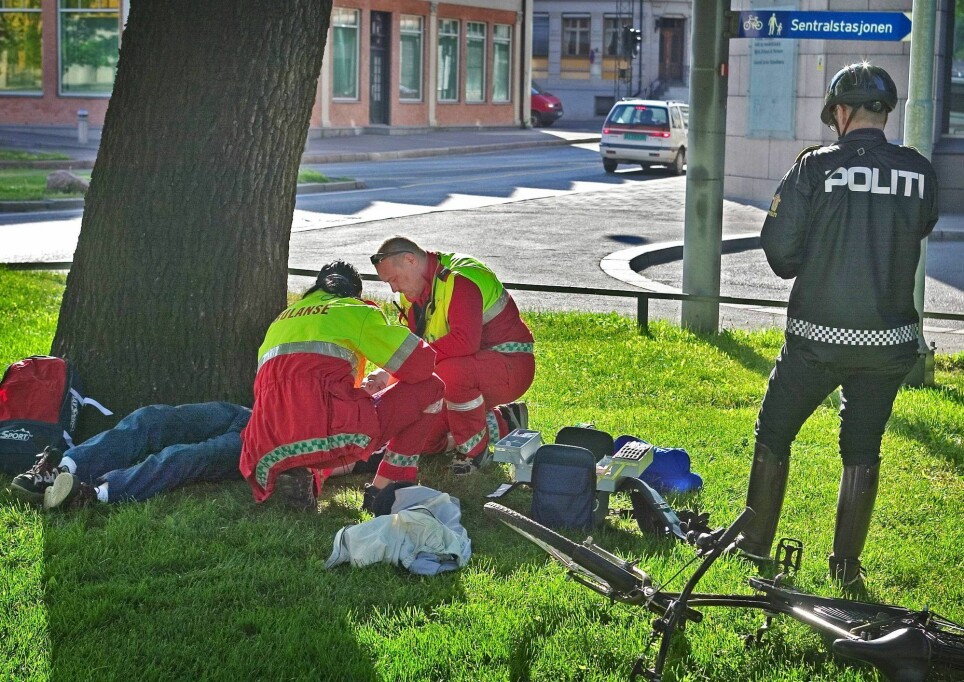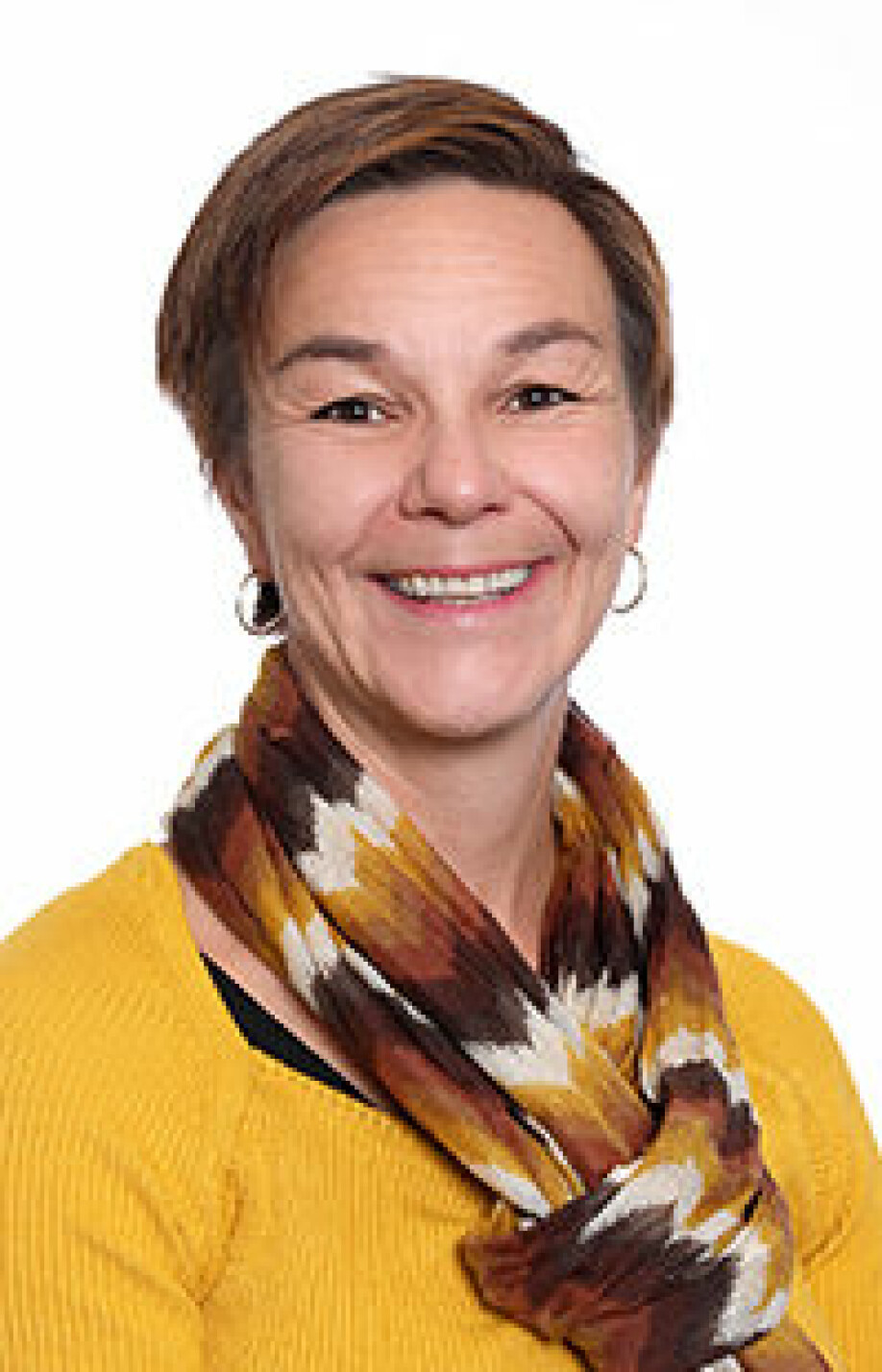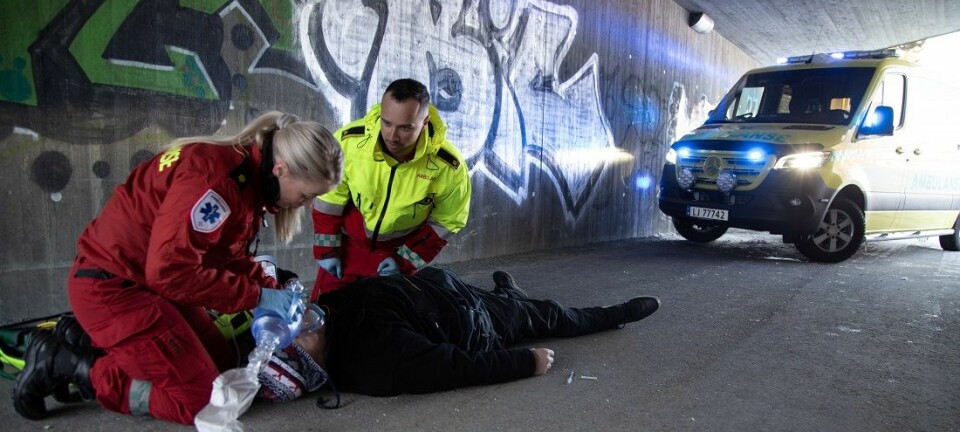
We can’t punish and help drug addicts at the same time, researchers say
Norwegian drug policy may be about to change radically. One researcher hopes this will provide addicts more help.
The same drug addict who is fined for using drugs on Brugata in Oslo also gets methadone on prescription just around the corner.
“This double-track drug policy is a big dilemma,” says Hilgunn Olsen, who worked with drug addicts for many years before becoming a researcher.
She now works at the University College of Norwegian Correctional Service (KRUS) and has submitted a doctoral dissertation on drug policy, in which she addresses some key dilemmas.
“A strong criminal threat and resource-intensive social work and drug treatment have not given us the results we have hoped for. Many people continue to use illegal drugs. Some become sick and mortality is still high,” Olsen says.

Roughly 260 people die from overdoses every year in Norway. That’s more than those who die in traffic accidents.
A radical proposal
In Norway, people began to take drugs seriously when hippies took over the park surrounding the Royal Palace in Oslo in the 1960s.
Norwegian society responded by increasing punishment.
Now the country finds itself at a new crossroads.
There are many indications that a political majority may be in favour of decriminalizing drugs. That would mean a complete turnaround from where Norway first started.
A government-appointed committee, the Drug Reform Committee, came up with a radical proposal in 2019.
Drug addicts should helped, not punished.
The majority in the committee proposed a model where it is still illegal to use and possess drugs, but where a user isn’t punished for this. The precondition is that the amount of drugs on the user must be within what is considered a user’s dose.
Portugal has taken the same approach, with good results.
The health sector takes
If a political majority approves this approach in 2021, Norway’s approach to drug use and possession will be transferred from the justice sector to the health sector.
Norway will then take a completely different path than its neighbour Sweden, where punishment is still a strong component of that country’s drug policy.
It will also be an approach with its own past.
From punishment to medicine
When drug use increased sharply in Norway and young people started using drugs, there was a strong belief that punishment could solve all problems.
From 1965 to 1984, the penalty for drug offenses in Norway increased from 6 months to 21 years in prison.
Nevertheless, drug use increased sharply.
Eventually, opinions changed, and optimism towards treatment took over. Several treatment institutions were established in the 1980s, Olsen says.
But few people were “cured” of their addiction.
Many became ill and tired
At the turn of the millennium, around 100 drug users gathered every day at the “Plata” in central Oslo. Up to 1000 people would stop by to purchase drugs every day.
Public debate over the open use of drugs intensified. It wasn’t just the Norwegian media that reported on what was happening in central Oslo.
The British newspaper The Guardian wrote:
“Expensive Oslo is a cheap fix capital. In a country where drugs cost less than alcohol, heroin addiction is causing growing alarm to Norwegian authorities.”
Drug users were sick and exhausted. Something had to be done.
Reducing damage has now become the new goal for drug treatment, Olsen believes.
“At this point, medicating addicts took precedence over social work,” Olsen said.
Tops for overdoses in Europe
Today, Norway has come a long way with respect to harm reduction.
In Oslo and Bergen, there are rooms where addicts can inject their drugs safely, and addicts have access to opiates prescribed by a doctor. This year, the distribution of a legally produced heroin-assisted treatment was first offered.
Yet people continue to die.
Every year, nearly 260 people in Norway die from an overdose. For years, Norway has held a very unenviable top position in European overdose statistics.
Only a few people who start treatment with drug-assisted rehabilitation complete it. Research also shows that things go badly with the majority of users who quit, Olsen says.
Two of the most common drugs used in this treatment are methadone and buprenorphine.
These drugs are used as part of lifelong treatment. And when people want to quit the programme, many overdose.
Olsen believes that the first addicts who began with drug-assisted rehabilitation received better follow-up than those being treated today.
“Many addicts find that the rehabilitation-part in the treatment programme has gradually disappeared, she says.
Observations and interviews
Olsen’s doctorate is based on observations, interviews and document studies.
She has been on the streets and talked to the users and employees in the injection rooms in the capital.
She has also interviewed several key players in Norwegian drug policy. One commonality they all have is that they work with drug addicts in everyday life.
The researcher has also analysed what she believes are the most important political documents related to Norwegian drug policy.
Sick or criminal?
And she has accompanied the Oslo police force at work.
Olsen has seen the dilemmas police officers face when they grapple with the contradictions between a law that requires them to punish drug addicts, and society’s attitude towards drug use which has changed dramatically.
In recent years, the links between substance abuse and mental illness have become much more clearly understood.
Today, the police also to a much greater extent perceive drug addicts as being sick, Olsen said. This means that police officers have conflicting feelings about prosecuting them.
“On the one hand, they feel it’s a meaningless job. At the same time they need to maintain peace and order. Without the police, it would be very unsafe to be in the centre of Oslo. There can be lot of violence and conflict in these groups,” she said.
Some people are allowed to get away with having a dose of heroin in their pocket, while others are charged for it.
Fines and serving time
Today, drug users gather in Oslo, primarily in the street called Brugata, in front of the Gunerius shopping centre, a little east of central Oslo.
Many people would like to move them away from that area, Olsen says. She believes that a lot of resources are still used to prosecute them. No one wants a group like this hanging out outside their stores, their workplaces or in their immediate neighbourhood.
The police order drug addicts away from the city centre. If they don’t comply with this requirement they are fined. When a drug addict accumulates enough unpaid fines, they have to serve time, generally for shorter sentences.
But the police have to make many decisions on their own. That means there will potentially be different approaches to the same situation.
“Some people are allowed to get away with having a dose of heroin in their pocket, while others are charged for it,” Olsen said.
Not true of the country as a whole
Sverre Martin Nesvåg is head of research at the Regional Competence Centre for Drug Research in Health West (KORFOR). The group is located at Stavanger University Hospital. Nesvåg was a member of the government-appointed Drug Reform Committee, which last year came up with the radical proposal for a new Norwegian drug policy.
Nesvåg has read Olsen's doctoral dissertation. He thinks that she does a good job describing the dilemma facing police when they are forced to weigh competing objectives in Norwegian drug policy.
Nevertheless, Nesvåg is critical of the examples Olsen uses to illustrate the situation.
“She describes dilemmas the police have regarding injection rooms and in open drug use situations such as on Brugata in Oslo. But this is mostly a phenomenon in Oslo and Bergen. This isn’t the challenge facing police in the rest of the country,” he believes.
“But the challenges are just as great elsewhere in the country,” he said.
Mostly a good relationship
When Nesvåg was on the Drug Reform Committee, the committee members travelled around the country to talk to both the police and drug addicts.
“The impression we were left with is that these two groups have a mostly good relationship,” he said.
“We saw that the vast majority of the police have developed a practice where they as much as possible want to avoid making life worse for this group,” says Nesvåg.
“If users commit offenses other than using drugs, then the police will always have to include drug use and possession as a supplement to the prosecution. But apart from that, the experience of drug addicts is that police are as much their protectors as prosecutors,” says Nesvåg.
At the same time, he points out that as long as this practice doesn’t have a clear legal basis, addicts will never be able to be sure that individual police officers won’t exploit their position of power.
“That means it’s important that our laws don’t legitimize police officers who behave like jerks,” he said.
Concerned about the young
When the Drug Reform Committee presented its report to the police last year, there were no protests regarding the proposal to decriminalize drug use among known drug addicts, Nesvåg says.
But police are concerned that young people who are starting to use narcotics won’t get enough negative reaction from society at large.
Need to recognize role of municipalities
Olsen believes that if the proposals to the Drug Reform Committee go through the political process, then social work will play a greater role in drug policy.
She points out that she doesn’t think that the social work aspect of drug treatment has decreased. But the overall drug policy provides a lot of focus and funding for medical measures. As a consequence, the social work aspect has been given less focus, she says.
“My hope is that the focus on punishment will be even lower and that there will be more social work directed toward drug addicts,” she said.
At the same time, Olsen points out that this will put demands on the municipalities. They will have a great responsibility to follow up on drug users, and they’ll need extra funding to do the job, she said.
“If the criminal justice aspect is toned down without strengthening the social work and medical aspects of treatment, the result will be even worse follow-up for drug users,” she said.
Norway has the lowest proportion of illegal drug users in the world and we also have the lowest alcohol consumption. We can’t just attribute that to policy alone. Culture also comes into play.
Disagree on two aspects
Drug researcher Nesvåg completely disagrees with Olsen that the focus on social work with respect to drug treatment has gotten worse.
“I would say that it remains a strong part of our current treatment. This has been true for as long as we have been offering treatment. But at the same time, fortunately, the health care component has also been significantly strengthened,” he says.
He also disagrees with Olsen that harm reduction has become the main goal in drug policy.
“I am certain that any and all of those who work in drug treatment and rehabilitation in Norway will support a person who wants to stop using drugs. But our understanding of this has been complicated because we are also committed to helping people to have a better life while they are using drugs,” he said.
Addiction is a serious condition with major negative consequences for people's lives and health, Nesvåg emphasizes. That means it’s wrong to pit reducing harm against total abstinence.
“Consider this: We want more people to survive cancer, but at the same time we would never consider cancer treatment a failure if not everyone gets well,” he said.
Politics can’t explain everything
Nesvåg believes that Norway’s overdose deaths are not solely, or perhaps to a small extent, due to Norwegian drug policy.
“These overdoses are equally due to the drug culture we have in Norway. For example, users inject heroin and don’t smoke it. There is also a strong tendency to "go all out" among the Norwegian drug user community,” he said.
“It’s almost as if the Norwegian drinking culture has spread to other drugs,” he said, alluding at the well-known phenomena of binge drinking in Norway.
“It’s not just as simple as if we just find the right measure, we’ll stop the overdoses. That’s as naive as believing that we can have a drug-free society if we only take the right measures,” Nesvåg said.
“Norway has the lowest proportion of illegal drug users in the world and we also have the lowest alcohol consumption. We can’t just attribute that to policy alone. Culture also comes into play,” he said
“After all, criminal policy is only a small part of what regulates people's behaviour,” Nesvåg said.
Translated by Nancy Bazilchuk
Reference:
Hilgunn Ilsen: Narkotikapolitikk og skadereduksjon: Dilemmaer i politiarbeid, rusbehandling og sprøyterom, (Drug policy and harm reduction: Dilemmas in police work, drug treatment and injection rooms) PhD dissertation, University of Oslo, 2020
———
Read the Norwegian version of this article at forskning.no
RELATED:
































